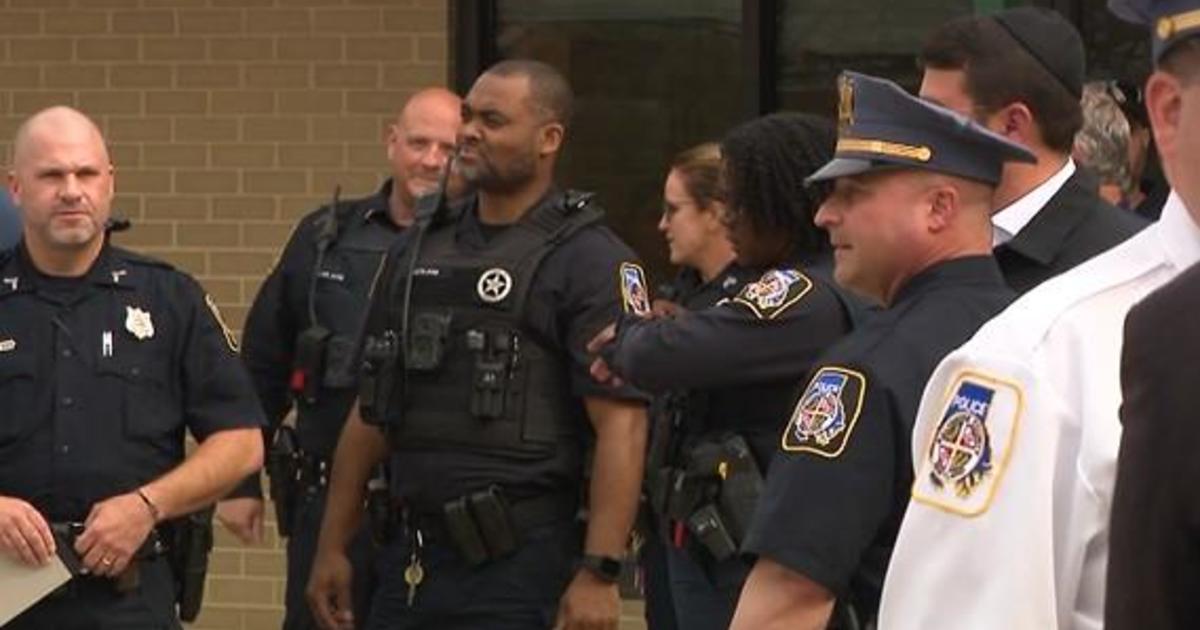Walking Tour Shows Off Post-War Black History
COURTNEY MABEUS
The Frederick News-Post
FREDERICK, Md. (AP) -- The flagpole from which an American flag now flutters in front of the Roger Brooke Taney house on South Bentz Street might be considered a bookend in local history.
The pole went up in 1948, the year the branches of the United States military were integrated. It went up to support a flag donated by an all-black American Legion post that stood next door to the house that Taney had owned along what was then the outskirts of the city.
Though Taney didn't live in the house itself, it now serves as a local museum for the man who served as chief justice of the U.S. Supreme Court 1836 to 1864.
Taney started his law career in the City of Frederick, living here from 1801 until 1823, but is remembered most for his controversial ruling in the Dred Scott case in 1857 that declared, among other things, that blacks could not be considered citizens. The flagpole in front of his house is just one of nearly two dozen stops on an African American History Walking Tour supported by the Historical Society of Frederick County that started from the Taney house Saturday.
The day's scorching heat seemed to play a large part for June 1's tiny turnout. Only Jim Hargis of Chicago and Anne Baldwin of Frederick came out for the first tour. A second tour is scheduled July 6 at 1:30 p.m.
At the start of the Civil War, about 4,900 free blacks and 3,200 slaves were living in the Frederick region, said Jim Callear, a volunteer with the historical society who led the tour. Sympathies were divided regionally as Maryland was a border state, Callear said.
"After the Civil War, things changed, but in a lot of ways, they were still different for a lot of blacks here in this community," Callear said.
The tour lasted about an hour and a half and focused largely on locations that popped up post-Civil War. It traveled a short route that went from South Bentz, West South, Ice and to All Saints streets before ending back at the Taney house. Stops on the tour included a location at the corner of Phoebus Avenue and Bentz Street where the city's first black elementary school was built. A high school wouldn't be built until decades later, meaning that blacks who wanted to continue their education most likely had to travel to Hagerstown, Callear said.
A high school was finally established around 1920 and stood roughly where the current building at 173 All Saints St. now stands, Callear pointed out later in the tour. The building was a "primitive-looking structure" and was only in use for a short time but it "established the need and the precedent that if you were black you could get an education in Frederick County."
The lesson of education wasn't lost on Hargis, who is Baldwin's brother. He graduated from Frederick High School in 1965.
"When I grew up here, of course it was segregated," Hargis said.
Shops -- including Lee's Men's Shop -- serving the black community popped up amid an otherwise segregated time period to serve the population. Still, that slice of downtown, just as it is today, was showing signs of growing diversity. The South Street School, which served whites, still stands as an apartment building. It's just around the corner from where the black elementary once stood.
Another stop included a house along Ice Street in which Ulysses Grant Borne practiced medicine. Perhaps in another bid to the area's growing diversity -- and acceptance of other races -- Borne was so well respected that white patients also visited the doctor, Callear said.
"It shows the complexity of the neighborhood," Callear said.
------
Information from: The Frederick (Md.) News-Post, http://www.fredericknewspost.com
(Copyright 2013 by The Associated Press. All Rights Reserved.)



